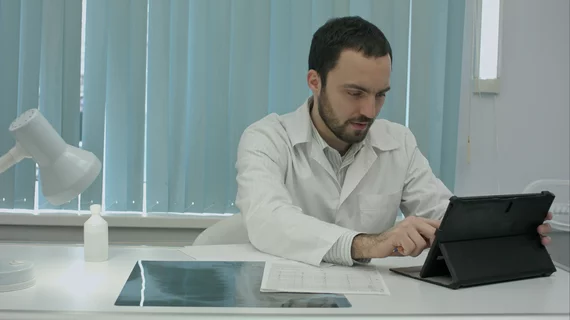Burnout epidemic: Which pediatric radiologists are suffering most?
The rise of burnout in medicine is well documented, and it is only growing among radiologists, wrote authors of a recent Journal of the American College of Radiology study. The results are particularly concerning in pediatric radiology.
Rama S. Ayyala, MD, with Rhode Island Hospital-Hasbro Children’s Hospital in Providence, Rhode Island, and colleagues received 490 responses from an anonymous survey of members of the Society for Pediatric Radiology (SPR). A condensed version of the Maslach Burnout Inventory (MBI) was used to determine burnout.
Overall, they found high exhaustion (66 percent) and depersonalization (61 percent) to be two factors that comprise the “core of burnout."
“The combination of high burnout in pediatric radiology with the trend of declining interest in training new pediatric radiologists can be detrimental for the future of pediatric radiology,” they added. “Addressing burnout in pediatric radiology is vital to sustain the specialty and to continue to improve its outlook.”
On-call burnout
The researchers noted one “major finding” of their study was the high association between pediatric radiologists’ on call and high rates of burnout.
On-call respondents reported a “borderline statistically significant” higher emotional exhaustion score (mean of 30.7 versus 27.5) and higher de-personalization score (11.7 versus to 8.3) compared to those not on-call.
Many attending physicians return to the hospital after a full day of work and are expected to resume their normal shift the following day. While not unique to pediatric radiology, the long hours and limited vacation days lead to exhaustion and eventually burnout, Ayyala et al. wrote.
The longer you practice, the more you’re burned out
Results showed mid-career radiologists (11-20 years’ experience) reported more emotional exhaustion than junior (10 years or less) and senior (21 years or more) radiologists. Additionally, mid-career and junior radiologists had higher de-personalization scores than seniors; juniors reported more perceived lack of accomplishment.
Overall, burnout increases with the number of years in practice post-training, the authors wrote—with the exception being senior radiologists. This may be due to increased schedule and activity control, skills gained to combat burnout and semi-retirement.
Results showed no statistical difference in depersonalization and emotional exhaustion between genders, full-time and part-time status or practice setting.

